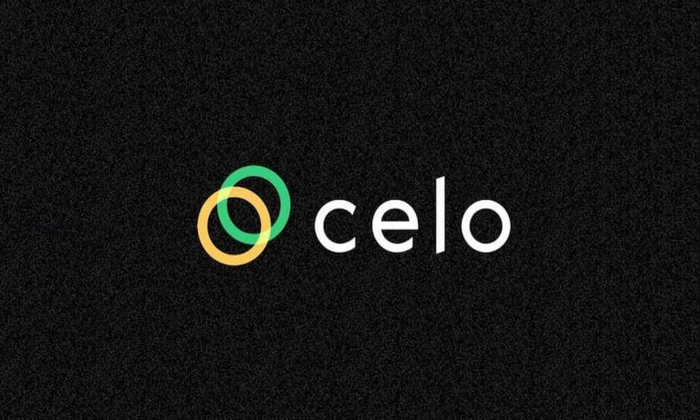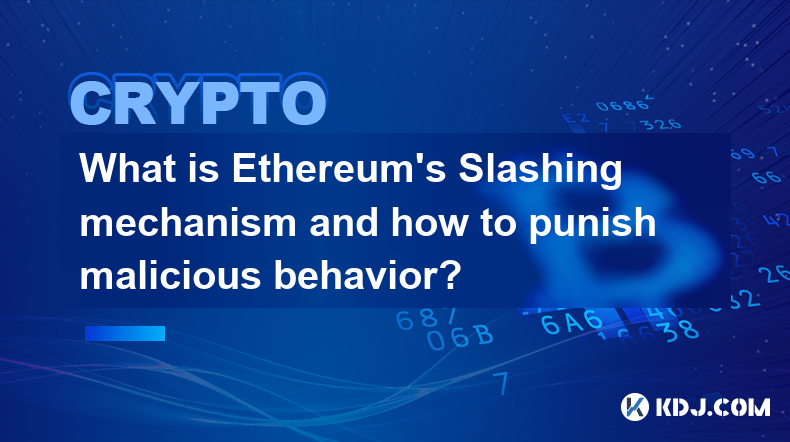-
 Bitcoin
Bitcoin $84,038.6422
1.85% -
 Ethereum
Ethereum $1,817.8801
0.92% -
 Tether USDt
Tether USDt $0.9995
0.00% -
 XRP
XRP $2.1351
3.96% -
 BNB
BNB $598.4742
1.52% -
 Solana
Solana $123.1644
5.86% -
 USDC
USDC $1.0000
0.00% -
 Dogecoin
Dogecoin $0.1709
7.15% -
 Cardano
Cardano $0.6626
2.26% -
 TRON
TRON $0.2390
1.01% -
 UNUS SED LEO
UNUS SED LEO $9.5317
1.49% -
 Chainlink
Chainlink $13.0080
1.82% -
 Toncoin
Toncoin $3.3962
-5.04% -
 Stellar
Stellar $0.2604
0.70% -
 Avalanche
Avalanche $18.1814
0.43% -
 Sui
Sui $2.2789
2.22% -
 Shiba Inu
Shiba Inu $0.0...01230
0.88% -
 Hedera
Hedera $0.1653
1.62% -
 Litecoin
Litecoin $84.3499
1.79% -
 Polkadot
Polkadot $4.0537
0.26% -
 MANTRA
MANTRA $6.2954
-1.62% -
 Bitcoin Cash
Bitcoin Cash $301.4205
0.84% -
 Bitget Token
Bitget Token $4.5323
1.18% -
 Dai
Dai $1.0000
0.01% -
 Ethena USDe
Ethena USDe $0.9991
-0.04% -
 Hyperliquid
Hyperliquid $12.3547
4.90% -
 Monero
Monero $215.9297
1.84% -
 Uniswap
Uniswap $5.9374
2.16% -
 Pi
Pi $0.5289
-7.55% -
 Pepe
Pepe $0.0...07202
8.30%
When was CELO coin issued? Learn about the origin of CELO coin in one article
Celo Token, initially known as Celo Protocol, emerged in 2017 with a mission to provide accessible and affordable financial services to underserved communities.
Oct 23, 2024 at 06:44 pm

CELO Coin: A Comprehensive Overview of Its Origins
1. CELO Token History
Celo was initially launched in May 2017 under the name Celo Protocol and was rebranded to Celo in 2019.
2. Development Timeline
- May 2017: Celo Protocol launched.
- September 2019: Rebranded to Celo.
- April 2020: CELO token launched through a token sale.
- June 2020: Celo mainnet went live.
3. Founders and Team
Celo was founded by Rene Reinsberg, Marek Olszewski, and Sep Kamvar. The team consists of experienced engineers and researchers with backgrounds in mobile payments, distributed systems, and cryptography.
4. CELO's Mission
Celo's mission is to make financial services accessible and affordable for everyone, especially in underserved regions. It aims to provide a user-friendly platform that eliminates barriers to entry and reduces transaction costs.
5. CELO Tokenomics
- Total Supply: 1,000,000,000 CELO
- Circulating Supply: 560,625,912 CELO
Token Distribution:
- 38%: Ecosystem and DAO
- 25%: Team and Advisors
- 25%: Investors
- 12%: Reserve
6. CELO's Use Cases
Celo tokens are used for various purposes within the Celo ecosystem:
- Transactions: CELO is the native currency used for transactions on the Celo network.
- Gas Fees: CELO is used to pay transaction fees on the network.
- Staking: CELO can be staked to earn rewards and participate in network governance.
- Stablecoins: CELO is used to stabilize the value of stablecoins issued on the Celo network.
7. Conclusion
Celo is an ambitious project that aims to revolutionize financial inclusion. Its origins lie in the desire to create a user-centered platform that empowers individuals with affordable and convenient financial services. The launch of the CELO token in 2020 marked a significant milestone in the development of the Celo ecosystem and established Celo as a key player in the global blockchain landscape.
Disclaimer:info@kdj.com
The information provided is not trading advice. kdj.com does not assume any responsibility for any investments made based on the information provided in this article. Cryptocurrencies are highly volatile and it is highly recommended that you invest with caution after thorough research!
If you believe that the content used on this website infringes your copyright, please contact us immediately (info@kdj.com) and we will delete it promptly.
- Solana (SOL) gains nearly 2% in the last 24 hours and trades at $118.28
- 2025-04-05 05:30:12
- Troller Cat ($TCAT): A New Breed of Meme Coin Targeting 100x Gains
- 2025-04-05 05:30:12
- Brace Yourself—over $600M Worth of Tokens Are Unlocking This Week
- 2025-04-05 05:25:12
- The memecoin market remains a space highly filled with speculative, volatile tokens
- 2025-04-05 05:25:12
- Itaú Unibanco, the Largest Banking Institution in Brazil, Is Considering Issuing a Stablecoin
- 2025-04-05 05:20:12
- title: BitMEX co-founder Arthur Hayes believes Bitcoin (BTC) will soon start printing rallies
- 2025-04-05 05:20:12
Related knowledge

What is Ethereum’s Slashing mechanism and how to punish malicious behavior?
Feb 20,2025 at 03:08am
Key PointsOverview of slashingDifferent types of slashing in EthereumIncentives and consequences of slashingIdentifying and reporting slashed validatorsOngoing discussions and potential improvementsEthereum's Slashing Mechanism: Punishing Malicious BehaviorEthereum's slashing mechanism is an essential tool for ensuring network security and punishing mal...

What is the verifier node of Ethereum and how to become a verifier?
Feb 19,2025 at 06:00pm
The Verifier Node of Ethereum: A Comprehensive GuideKey Points:What is a Verifier Node?How to Become a Verifier NodeResponsibilities and Rewards of a Verifier NodeMinimum Requirements for Becoming a Verifier NodePotential Difficulties in Running a Verifier Node1. What is a Verifier Node?A Verifier Node is an independent entity on the Ethereum network th...

What is Ethereum’s staking, and how to participate and earn money?
Feb 19,2025 at 04:37pm
Key Points:Understanding Ethereum's Staking MechanismSteps to Participate in StakingBenefits and Rewards of StakingSecurity and Risk ConsiderationsTechnical Requirements and Hardware OptionsPotential Challenges and Troubleshooting TipsFAQs on Ethereum StakingWhat is Ethereum's Staking?Proof-of-Stake (PoS) is a consensus mechanism used in blockchain netw...

What is Ethereum’s DAO (Decentralized Autonomous Organization) and how does it work?
Feb 20,2025 at 03:12am
Key PointsDefinition and Structure of a DAOGovernance and Decision-Making in DAOsBenefits and Use Cases of DAOsChallenges and Limitations of DAOsWhat is Ethereum's DAO (Decentralized Autonomous Organization) and How Does It Work?Definition and Structure of a DAOA Decentralized Autonomous Organization (DAO) is an innovative governance and management fram...

What is Ethereum's multi-signature wallet and how to improve security?
Feb 20,2025 at 02:18pm
Key Points:Understanding the Concept of a Multi-Signature WalletBenefits and Drawbacks of Multisig WalletsRequirements for Setting Up a Multisig WalletStep-by-Step Guide to Generating a Multisig WalletImplementing Strategies for Enhanced Security1. Understanding the Concept of a Multi-Signature WalletA multi-signature (multisig) wallet in the Ethereum e...

What is Ethereum's oracle and how to provide data for smart contracts?
Feb 21,2025 at 01:30am
Key Points:Understanding the concept of oracles in EthereumExploring different types of oraclesDetailed guide on how to provide data for smart contractsAddressing potential challenges and considerationsWhat is Ethereum's Oracle?Oracles are crucial components in the Ethereum ecosystem, enabling smart contracts to access real-world data and off-chain even...

What is Ethereum’s Slashing mechanism and how to punish malicious behavior?
Feb 20,2025 at 03:08am
Key PointsOverview of slashingDifferent types of slashing in EthereumIncentives and consequences of slashingIdentifying and reporting slashed validatorsOngoing discussions and potential improvementsEthereum's Slashing Mechanism: Punishing Malicious BehaviorEthereum's slashing mechanism is an essential tool for ensuring network security and punishing mal...

What is the verifier node of Ethereum and how to become a verifier?
Feb 19,2025 at 06:00pm
The Verifier Node of Ethereum: A Comprehensive GuideKey Points:What is a Verifier Node?How to Become a Verifier NodeResponsibilities and Rewards of a Verifier NodeMinimum Requirements for Becoming a Verifier NodePotential Difficulties in Running a Verifier Node1. What is a Verifier Node?A Verifier Node is an independent entity on the Ethereum network th...

What is Ethereum’s staking, and how to participate and earn money?
Feb 19,2025 at 04:37pm
Key Points:Understanding Ethereum's Staking MechanismSteps to Participate in StakingBenefits and Rewards of StakingSecurity and Risk ConsiderationsTechnical Requirements and Hardware OptionsPotential Challenges and Troubleshooting TipsFAQs on Ethereum StakingWhat is Ethereum's Staking?Proof-of-Stake (PoS) is a consensus mechanism used in blockchain netw...

What is Ethereum’s DAO (Decentralized Autonomous Organization) and how does it work?
Feb 20,2025 at 03:12am
Key PointsDefinition and Structure of a DAOGovernance and Decision-Making in DAOsBenefits and Use Cases of DAOsChallenges and Limitations of DAOsWhat is Ethereum's DAO (Decentralized Autonomous Organization) and How Does It Work?Definition and Structure of a DAOA Decentralized Autonomous Organization (DAO) is an innovative governance and management fram...

What is Ethereum's multi-signature wallet and how to improve security?
Feb 20,2025 at 02:18pm
Key Points:Understanding the Concept of a Multi-Signature WalletBenefits and Drawbacks of Multisig WalletsRequirements for Setting Up a Multisig WalletStep-by-Step Guide to Generating a Multisig WalletImplementing Strategies for Enhanced Security1. Understanding the Concept of a Multi-Signature WalletA multi-signature (multisig) wallet in the Ethereum e...

What is Ethereum's oracle and how to provide data for smart contracts?
Feb 21,2025 at 01:30am
Key Points:Understanding the concept of oracles in EthereumExploring different types of oraclesDetailed guide on how to provide data for smart contractsAddressing potential challenges and considerationsWhat is Ethereum's Oracle?Oracles are crucial components in the Ethereum ecosystem, enabling smart contracts to access real-world data and off-chain even...
See all articles





















































































